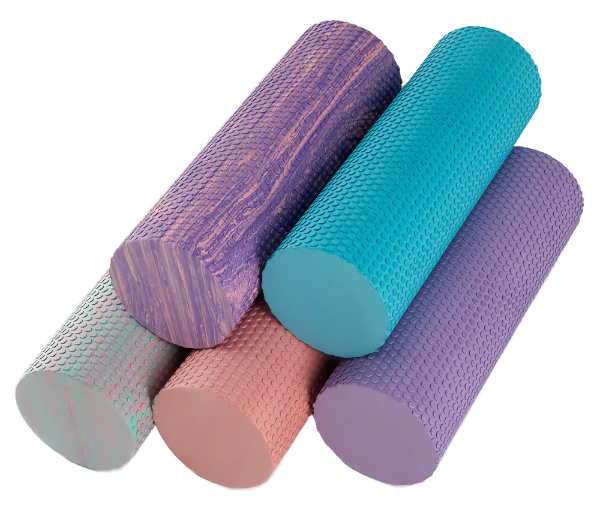When it comes to selecting the right type of EVA foam column for your needs, it’s important to understand the key differences between solid and hollow varieties. EVA foam, short for ethylene-vinyl acetate, is a versatile material used in a variety of applications, ranging from sports equipment to packaging and more. Let’s delve into the specifics of solid and hollow EVA foam pillars, exploring their unique properties, uses, and benefits.
What is EVA Foam?
EVA foam is a high-density, closed-cell foam that is known for its excellent durability, shock absorption, and flexibility. It is commonly used in products that require a lightweight yet strong material. EVA foam columns, also known as EVA foam rods or cylinders, are popular in industries such as construction, sports, and crafts.
Solid EVA Foam Columns
Characteristics
Solid EVA foam columns are exactly what they sound like—columns that are completely solid throughout. They are dense, sturdy, and offer excellent structural integrity. Here are some key characteristics of solid EVA foam pillars:
- High Density: Solid EVA foam has a higher density compared to hollow columns, providing superior strength and durability.
- Excellent Shock Absorption: Due to their solid structure, these columns are highly effective at absorbing impacts and shocks.
- Versatility: They can be easily cut, shaped, and customized to fit specific requirements.
- Durability: Solid EVA foam rods are resistant to water, chemicals, and UV radiation, making them suitable for outdoor applications.
Applications
Solid EVA foam columns are widely used in various applications, including:
- Sports Equipment: Used in padding for sports gear, gym mats, and protective equipment.
- Construction: Employed as cushioning material in construction joints and expansion joints.
- Crafts and DIY Projects: Ideal for creating custom shapes and designs due to their ease of manipulation.
- Packaging: Provides excellent protection for fragile items during transportation.
Hollow EVA Foam Columns
Characteristics
Hollow EVA foam columns, as the name suggests, have a hollow center. This design makes them lighter and often more flexible than their solid counterparts. Key characteristics of hollow EVA foam pillars include:
- Lightweight: The hollow center reduces the overall weight, making them easier to handle and transport.
- Flexibility: Hollow EVA foam rods are generally more flexible, allowing for a greater range of motion in certain applications.
- Cost-Effective: Typically, they are more cost-effective due to the reduced amount of material used in their construction.
- Customization: Like solid columns, hollow ones can also be easily cut and shaped to meet specific needs.
Applications
Hollow EVA foam columns are suitable for a variety of uses, including:
- Fitness and Rehabilitation: Commonly used in foam rollers and other fitness equipment that require a balance of support and flexibility.
- Insulation: Used in pipe insulation and other applications where lightweight and flexible insulation is needed.
- Floatation Devices: Due to their buoyancy, they are often used in swimming aids and other floatation devices.
- Decorative Applications: Employed in creating lightweight and visually appealing decorative items.
Choosing Between Solid and Hollow EVA Foam Columns
The choice between solid and hollow EVA foam columns depends on the specific requirements of your project. Here are some considerations to help you make the right decision:
- Weight Requirements: If you need a lightweight solution, hollow EVA foam columns are the better choice.
- Strength and Durability: For applications requiring high strength and durability, solid EVA foam columns are more suitable.
- Flexibility: Consider hollow columns for applications that benefit from greater flexibility.
- Budget: Hollow EVA foam columns are generally more cost-effective, making them a good choice for budget-conscious projects.
In conclusion, both solid and hollow EVA foam columns have their own unique advantages and are suitable for different applications. By understanding their properties and uses, you can select the right type of EVA foam rod to meet your specific needs. Whether you refer to them as EVA foam pillars, rods, or cylinders, these versatile materials are essential in various industries, providing solutions that are both practical and innovative.
Read more about the EVA Foam Roller products.
FAQ
What is EVA foam?
EVA foam is a high-density, closed-cell foam known for its durability, shock absorption, and flexibility. It is used in a variety of applications such as sports equipment, packaging, and crafts.
What are the characteristics of solid EVA foam columns?
Solid EVA foam columns are dense, sturdy, and provide excellent structural integrity. They offer high density, superior shock absorption, versatility, and durability.
What are the applications of solid EVA foam columns?
Solid EVA foam columns are used in sports equipment, construction, crafts, and packaging due to their strength and impact absorption properties.
What are the characteristics of hollow EVA foam columns?
Hollow EVA foam columns are lighter and more flexible than solid ones. They are cost-effective, easy to handle, and customizable.
What are the applications of hollow EVA foam columns?
Hollow EVA foam columns are used in fitness and rehabilitation, insulation, floatation devices, and decorative applications.
How do I choose between solid and hollow EVA foam columns?
Consider the weight, strength, flexibility, and budget requirements of your project. Solid columns are better for strength and durability, while hollow columns are ideal for lightweight and flexible applications.
